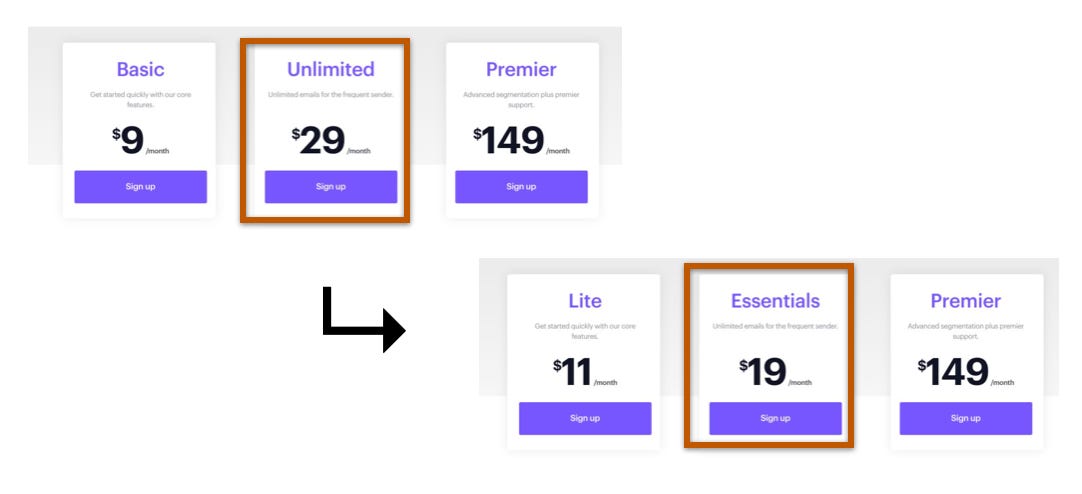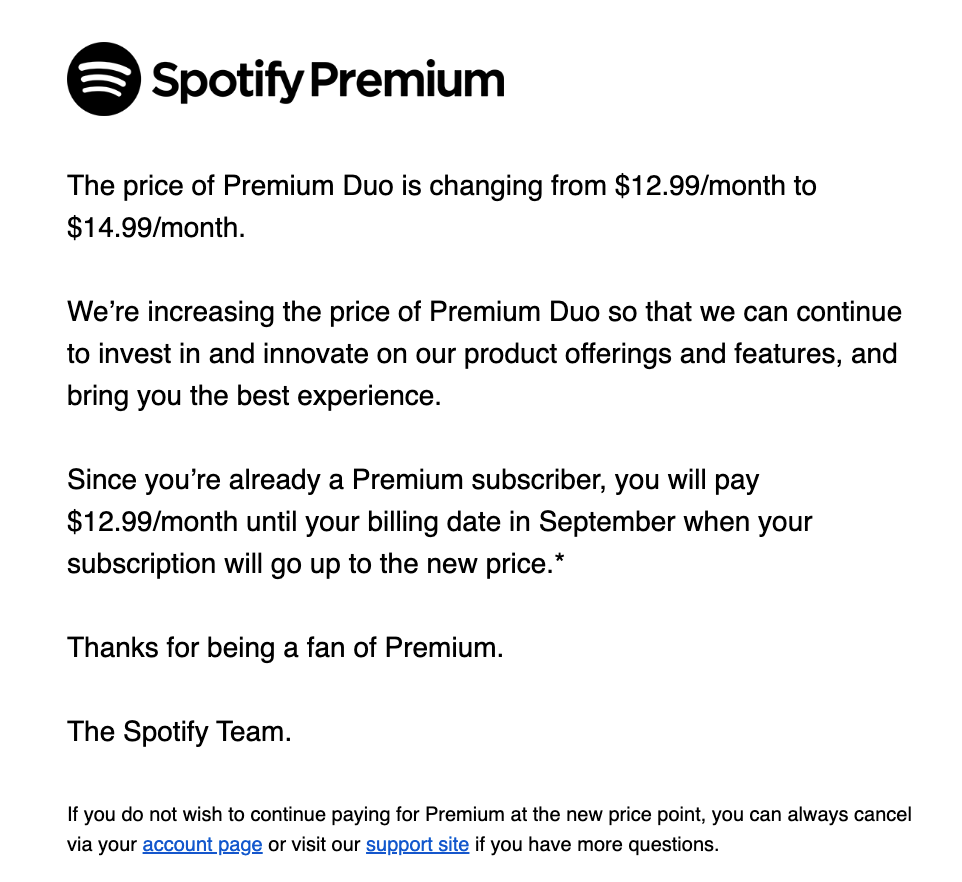SaaS Pricing is hard. PricingSaaS is your cheat code.
Monitor competitors, track real-time benchmarks, discover new strategies, and more.
Happy Friday and welcome new subscribers!
Today, I’ve got:
A primer on price cliffs
4 steps to message a price increase
My two favorite links of the week
Let’s get to it.
Price Cliffs 🧗🏼♀️
I generally believe the attention given to price points is overblown.
I’ve read a lot about the psychological impact of ending prices in 9’s and 5’s, and while I’m sure there’s something there, I don’t think it’s important in the grand scheme of things. Factors like pricing structure, positioning, and feature packaging are way more important.
That said, I do believe there are certain pricing thresholds that loom large in the customers mind. I like to think of these as price cliffs — once you go over the cliff, you risk a sharp drop in demand. [Note: ProfitWell calls this the Amex Effect]
One of those cliffs is $20 per month [another big one is $100 per month].
I like to think of $20/mo as the point where individual contributors are willing to pay for a SaaS product even if they won’t get reimbursed. This limit is particularly relevant for PLG companies since it allows users to build a business case before getting organizational buy-in.
Another reason to pay attention to price cliffs is that customers are generally not very price sensitive within the range leading up to the cliff.
With that in mind, I love a move that Monday.com made last week. Monday changed the price of their Pro plan from $16/seat/mo to $19/seat/mo. At their scale, this can have a material impact, and there’s very little downside.
Campaign Monitor also made a move towards the same cliff, but from the other direction. They dropped the entry price of their middle tier from $29/mo to $19/mo.
I’d imagine they’re looking for better conversion on that plan, and I’d be surprised if this move doesn’t help.
PS. I spotted these pricing changes in PricingSaaS. Sign up for free to keep tabs on your industry and outsmart the competition.
How to Message a Price Increase 🗣️
In my experience, there are few things scarier to SaaS leaders than raising prices. Why? Because customers can be ruthless, and nobody wants to face pushback.
But pricing changes shouldn’t be scary. Here’s how I think about it:
The subscription model assumes you're adding continuous value. If you weren’t, customers would stop paying.
Holding prices the same assumes your product is static, not evolving. This is not the case at most SaaS companies — many ship new features every week!
I’m not saying you should raise prices weekly, but increased value warrants increased prices. In general, I believe too few SaaS companies raise prices on a regular basis.
Here are the 4 steps I'd follow when messaging customers about a price increase:
Be confident in your messaging (no conciliatory tone).
Explain why prices are going up (no need for detail).
Tell customers when it will happen.
Give them a chance to change their plan.
A solid example is Spotify’s recent price change. Here’s the email they sent me:
I love how they:
Wasted no time.
Explained why prices are going up.
Told me when it would happen.
Gave me links to cancel or downgrade.
I'm sure they still got pushback -- that will always be the case.
But again, increased value warrants increased prices — since their last price change Spotify added audiobooks and a ridiculous amount of new music and podcasts. Honestly, they could likely go much higher.
Links 🔗
🎧 Reed Duchscher on My First Million
Great interview with a person who knows the creator economy better than anyone. Reed manages MrBeast and Dream, and has been in the trenches building creator brands for a decade. Highly recommend if you work with creators in any capacity.
My favorite newsletter that I’ve found recently. Stan breaks down GTM strategies for a new company every week, but keeps it short and sweet with links for further exploration. I don’t have time to read as much as I used to, so I’ve found myself drawn to newsletters that pack a lot of value into a brief format. This definitely fits the bill.
Thanks for reading! If you enjoyed this post, consider liking it, subscribing, or sharing with a friend so Substack shows me some love.






